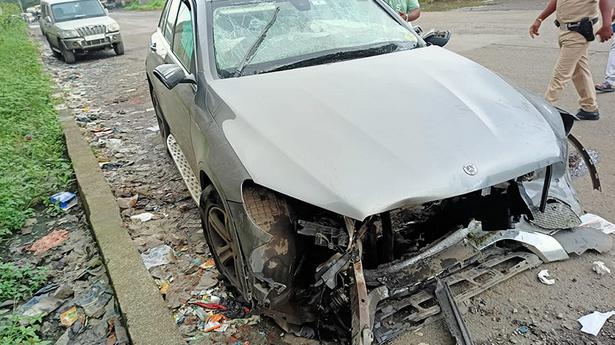
Cyrus Mistry car crash highlights importance of wearing seat belts even for rear passengers
The Hindu
The 2017 GLC 220d 4MATIC comes with seven airbags overall. There are no front-facing airbags for rear passengers in the car and just curtain airbags on the sides
The Mercedes-Benz GLC 220d 4MATIC, the SUV former Tata Sons chairman Cyrus Mistry was riding in on Sunday, comes with various safety features to protect passengers, including rear seat belts which apparently were not being used by the occupants of the ill-fated car.
Mistry, 54, and his friend Jahangir Pandole were killed in an accident in the Palghar district of Maharashtra on Sunday.
Anahita Pandole, 55, who was driving the 2017 version of the SUV, and her husband Darius Pandole, 60, were seriously injured.
The 2017 GLC 220d 4MATIC comes with seven airbags overall. There are no front-facing airbags for rear passengers in the car and just curtain airbags on the sides.
And just like any other car, airbags are ‘SRS’ or Supplementary Restraint System. The primary restraint system on cars remains the seat belt.
Therefore, usage of seat belts is crucial for safety of rear passengers, whether they are travelling in entry-level models or high-end luxury cars like the one Mistry was using, industry experts said.
It appears that Mistry wasn’t wearing a seat belt and must have been thrown in front at great velocity once the speeding car crashed into a divider.

The Union Budget unveiled on February 1, 2025, has come at a time of unprecedented global uncertainty and a flagging domestic economy. The real GDP growth is estimated at 6.4% for 2024-25 and between 6.3-6.8% for 2025-26, a far cry from >8 percent growth required annually to make India a developed nation by 2047. While much attention has been devoted to the demand stimulus through income tax cuts, not enough is said about the proposed reforms in urban development, tariff rationalisation, and regulatory simplification aimed at making Indian cities and corporates more competitive. Since the majority of economic activity is located in cities (urban areas account for ~55% of GDP) and produced by large corporates (~40% of the national output and 55% of India’s exports), the above-mentioned reforms have a pivotal role in improving India’s trend growth rate. Below we unpack each reform.












